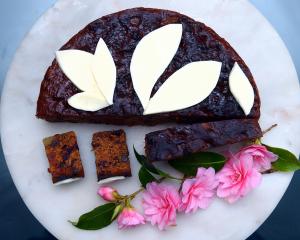Second labels may seem to be a relatively new phenomenon in Central Otago, dating back 10 years or so, but there is a more than 100-year precedent in the Bordeaux region of France where in 1902 Chateau Leoville las Cases created its second wine, Clos du Marquis, with Chateau Margaux following suit in 1908.
Various reasons led to their creation, financial considerations being one.
Wineries would love to sell all their production as their flagship label at $40-$50 a bottle, but this can become difficult if you have large volumes.
Most of us cannot justify that sort of cost on a regular basis, while in a good restaurant, mark-ups can make these wines ''special occasion'' bottles only.
Second labels, priced significantly lower, offer a taste of Central to a much broader audience and fit much better into many a restaurant's ''by the glass'' list.
Quality wise, second wines give the winemaker many more options.
Over time, viticulturists and winemakers may find specific plots on different soils give neither the desired flavour profile nor the fruit intensity required for the first wine, factors that may be magnified by vintage variation.
Similarly, fruit off younger vines may be channelled into the second label until the vines mature.
A further option may be to farm certain plots with a higher yield (of grapes) per hectare, which offers savings.
In the winery, the emphasis will be on drinkability and appeal. Expensive new oak barrels make way for other alternatives.
Time-consuming (and thus costly) techniques to help build ageability in the wine will be minimised, aiming to emphasise the fruit.
Bottled and sold early, they provide useful cashflow.
In the end, these wines are another, different expression of Central Otago.
Second wines may come at a second-tier price, but they don't need to be second best.
Next week's column will feature a tasting of Central Otago pinot noirs: as a tempter, here are three ''second labels'' from a different mould.
Price: RRP $19.99 (around $17 on special)
Rating: Very Good
Attractive nose: aromatic with pear and ripe fruits edging to pineapple. Nicely textured palate with stewed apples and spices, fruit jubes come with time. While the palate is not as concentrated as the nose, this offers very easy drinking. There's good length here without any alcohol burn. A nice offering.
Price: $19.99 (around $15 on special)
Rating: Very good
Ripe nose with spices, honey, musk, botrytis, and some wild yeast funk. Lots going on here. Oily and textural with a sweet fruit entry brought into check by a touch of apricot kernel bite to give balance. A powerful, complex wine with lots of interest. Might be polarising for some.

Price: Current vintage $100-$120
Rating: Excellent
Youthful colour. This wine belies its age. Tobacco and cigar box, blackcurrant leaf, cedary oak and cassis fruit. Tight and edgy; still with a fine tannin grip that opens up beautifully. Ripe fruit without a hint of overt sweetness. Precise and youthful. Marvellous finish and impeccable balance.













